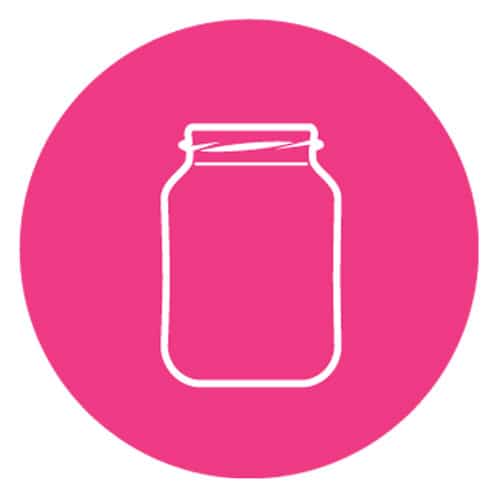
Video Recipe: How to Properly Pickle and Can
Editor’s Note: From raising chickens and goats to knitting a masterpiece to pickling and preserving, we present your ultimate guide to mastering the homespun, do-it-yourself life in Indy. So slip on your gardening gloves, and let’s get dirty. (See all Indy DIY stories here.) Here, a recipe including tips and important notes for the best canning and pickling outcomes.
Step 1: Prepare Cucumbers
1. Prepare cucumbers 8–12 hours in advance.
2. Rinse 1.25 pounds of cucumbers, and trim a quarter-inch off of blossom end (lightest in color).
3. Cut cucumbers in halves (or quarters, depending on pickle size preference).
4. Dissolve 3 tablespoons of pickling/canning salt in 1 quart (4 cups) of water.
5. Pour liquid over prepared cucumbers and let sit at room temperature for 8–12 hours.
Combine cider vinegar, water, pickling/canning salt, sugar, and mixed pickling spices in small saucepan. Bring to simmer, and remove from heat.
Step 3: Fill Jars
1. Drain the cucumbers that have been soaking in salted water. Rinse, and drain again.
2. Thinly slice one small onion. Toss with prepared cucumbers.
3. Have two clean, heat-tempered glass jars ready to go. (Ball Canning jars are affordable, and they’re readily available in most major groceries and some hardware stores.)
4. Place one garlic clove in each jar.
5. Fill each jar with the cucumber/onion mix. Cucumbers and onions should fit tightly, but not so tight that you have to shove them down into the jar. You want enough room for the brine to circulate.
6. Fill each jar with pickle brine, to 1/2-inch from the top of the jar. Release the air bubbles with a plastic knife, chopstick, or bubble remover from a canning kit. (Do not use a metal knife. It could cause small cracks in the jar.)
7. If the brine has dropped below 1/2-inch from the top of the jar after releasing air bubbles, add more brine.
8. Wipe the rim of the jar with a clean, damp paper towel.
9. Place lid on jar; screw on metal ring until finger tight. (Don’t force it; you want some air to be able to escape the jar in the canner.

1. Using a large pot (at least 2-3 inches taller than your jars), with a rack or metal trivet on the bottom, place the jars carefully into hot water (approximately 180 degrees) using a jar-lifter from a canning kit or rubberized tongs. (Tip: Add 1/4-cup distilled white vinegar in the pot with the water to make sure your jars do not have mineral spots after canning. Don’t worry… it won’t affect the flavor of your pickles.
2. Very Important: Do not place jars in water that is already boiling. They could break and cause injury. You will bring the water to boil after the jars are in place. There should be at least 1–2 inches of water above the top of the jars once they are in the pot.
3. Place the lid on the pot and turn the heat to high. When the water reaches a full rolling boil, set your timer for 10 minutes.
4. At the end of the 10 minutes, turn off the heat and remove the lid. Let the jars rest in the canner for 5 minutes.
Step 5: Removing Your Jars from the Canner
After the jars rest for five minutes, carefully lift them out of the canner with your jar-lifter or rubberized tongs and set them on a towel on your countertop where they can rest undisturbed for 12–24 hours. (If there is water on the lids when you pull them from the canner, leave it, and it will evaporate. Do not tilt the jar to remove the water, because this could compromise the seal.)
Step 6: Checking the Seals
After the jars have rested for 24 hours, remove the rings and verify that the lids sealed securely to the tops of the jars. If they have a strong seal, you can store them on your pantry shelves for up to 12 months. If any of the lids didn’t seal, store them in the refrigerator and consume within 6 months.
» MORE: A recipe for Dutch pickle spears adapted by Suzanne Krowiak
This article accompanied the “Master the Homespun Life” cover feature in the April 2014 issue.






